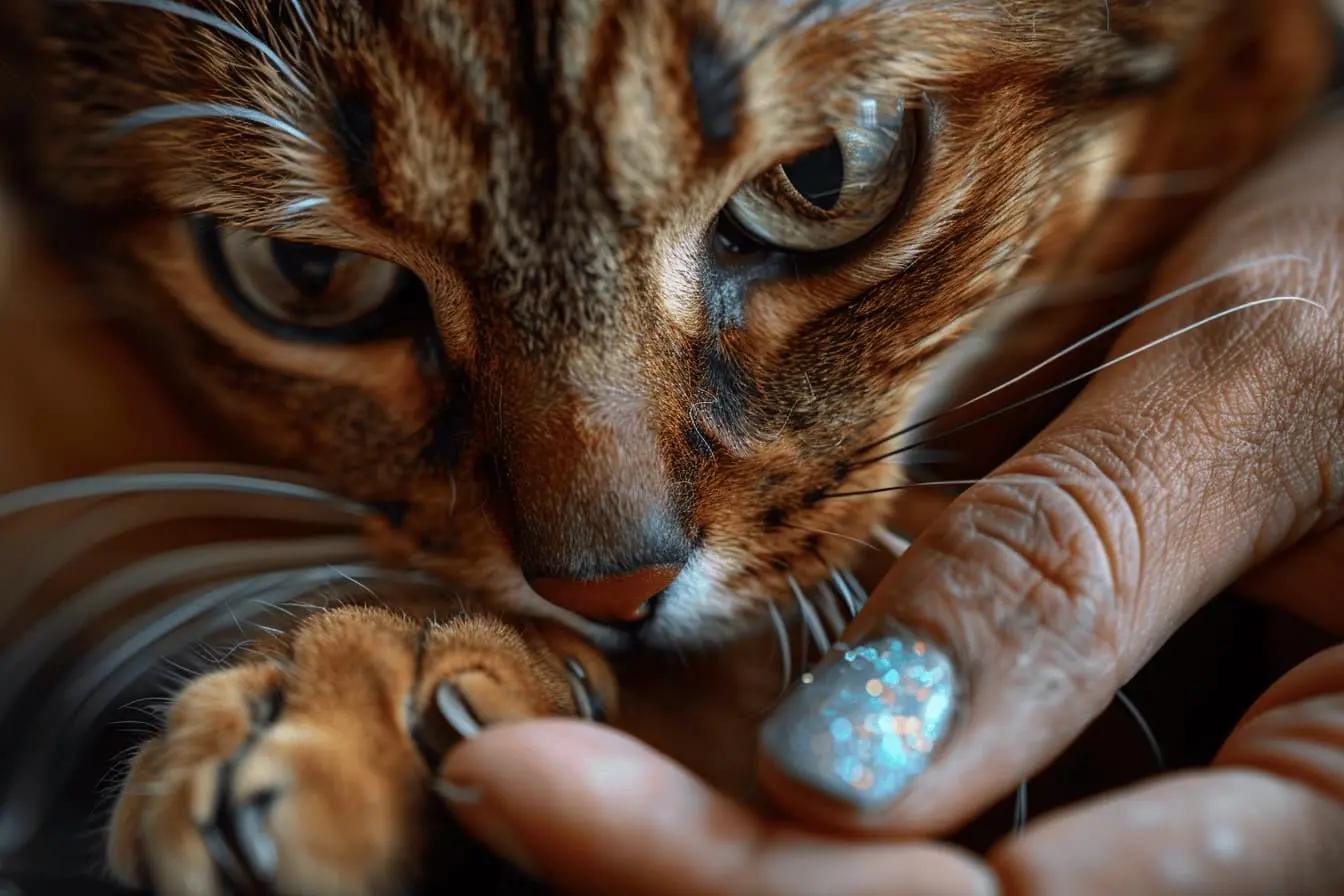
What Should You Do If Your Cat Gets a Tick?
Ticks are external parasites that feed on the blood of animals and, occasionally, humans. While they are less common than fleas, ticks can still cause significant health issues for cats. They are particularly prevalent in rural and woodland areas of the UK, but urban cats can also pick them up if they roam outdoors.
What Are Ticks?
Ticks are small arachnids, related to spiders and mites. They have eight legs and feed on blood by attaching themselves to a host. When unfed, they can be as small as a sesame seed, but once engorged with blood, they swell up to the size of a pea. The most common species affecting cats in the UK is the sheep tick (Ixodes ricinus), although other species may also be encountered.
Where Do Cats Pick Up Ticks?
Cats are most likely to encounter ticks in grassy, wooded, or rural areas. Ticks typically wait in tall grass or vegetation and attach themselves to animals as they brush past. Outdoor cats that hunt or roam in the countryside are at the highest risk, but even gardens with long grass can harbour ticks.
Signs Your Cat Has a Tick
Ticks are usually visible to the naked eye, especially once they have started feeding. Common signs include:
- A small, round lump on the skin, often grey, brown, or pink in colour
- Cats scratching, licking, or biting at the affected area
- Irritation, redness, or swelling around the bite site
- Unusual behaviour such as restlessness or loss of appetite
Ticks commonly attach around the head, neck, ears, and feet, so these areas should be checked regularly.
Health Risks Associated With Ticks
Ticks are more than just unpleasant to look at, they can transmit diseases and cause complications:
- Local irritation: Tick bites can cause redness, swelling, and discomfort.
- Anaemia: In rare cases, multiple ticks can lead to blood loss, particularly in kittens or frail cats.
- Infections: Improper removal can leave mouthparts embedded in the skin, leading to infection.
- Tick-borne diseases: Ticks can carry bacteria and other pathogens. In Europe, cats may be at risk of diseases such as haemoplasmosis and babesiosis. Lyme disease, while more common in dogs and humans, can also be transmitted by ticks.
How to Safely Remove a Tick
It is important to remove ticks correctly to avoid leaving parts of the parasite behind in your cat’s skin. The safest method is:
- Use a special tick-removal tool, available from vets or pet shops.
- Slide the tool under the tick, close to the skin.
- Twist slowly in one direction until the tick detaches.
- Place the tick in tissue or a sealed container and dispose of it safely.
- Clean the bite site with antiseptic suitable for cats.
Do not attempt to burn, squeeze, or smother ticks with substances like petroleum jelly, as this may cause them to regurgitate saliva or blood into the wound, increasing the risk of infection.
Treating Ticks in Cats
If your cat has only one or two ticks, removal with a tick tool may be sufficient. However, if infestations are frequent or you live in a high-risk area, your vet may recommend preventative treatments. These include:
- Spot-on treatments: Some flea treatments also provide protection against ticks.
- Oral medications: Available in some countries, though less commonly prescribed for cats.
- Tick collars: Special collars can provide ongoing protection, but not all are suitable for cats.
Always consult your vet before using any product, as certain dog tick treatments are highly toxic to cats.
Preventing Tick Infestations
Prevention is the best approach to keeping cats safe from ticks:
- Regular checks: Run your hands over your cat after they have been outdoors, particularly in spring and summer when ticks are most active.
- Keep grass short: Ticks thrive in long grass and dense vegetation.
- Use preventative treatments: Apply vet-approved products regularly if your cat is at risk.
- Check all pets: If you have dogs as well as cats, ensure they are protected too, as ticks can move between animals.
When to See a Vet
You should seek veterinary advice if:
- The tick cannot be safely removed.
- The bite site becomes red, swollen, or shows signs of infection.
- Your cat seems unwell after a tick bite, for example showing signs of lethargy, fever, or loss of appetite.
- Your cat picks up ticks frequently, indicating the need for preventative medication.
Conclusion
Ticks are blood-sucking parasites that can affect cats, particularly those spending time outdoors. While they may appear minor at first, ticks can transmit serious diseases and cause health problems if left untreated. By checking your cat regularly, removing ticks safely, and using preventative treatments, you can protect your pet from discomfort and illness. Staying observant and seeking veterinary help when necessary will ensure your cat remains healthy and safe from these parasites.
Related Vets
Vets near you
Speciality vets
- Aquatics vet specialists
- Birds vet specialists
- Camelids vet specialists
- Cats vet specialists
- Cattle vet specialists
- Deer vet specialists
- Dogs vet specialists
- Equines vet specialists
- Exotic vet specialists
- Goats vet specialists
- Pigs vet specialists
- Poultry vet specialists
- Sheep vet specialists
- Small Mammals vet specialists
- Wild vet specialists










